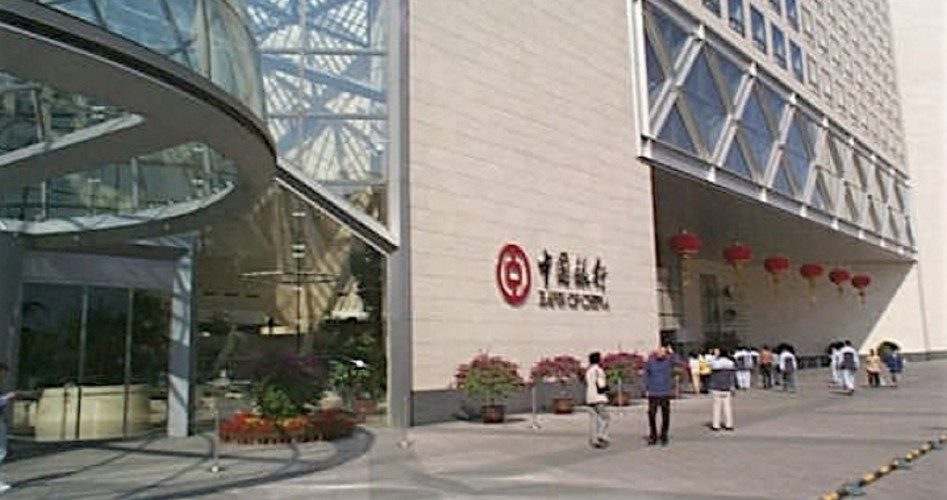
Kevin Yao, writing from Beijing for Reuters, expressed surprise when the latest numbers about China’s factory output came in at its lowest level in three years: “China’s factory output growth slowed unexpectedly in July…[due to] stiff global headwinds…” (emphasis added)
Those numbers were daunting but predictable. Even more daunting were those reflecting China’s export growth: outbound shipments increased just 1 percent in June compared to a year earlier, down from 11.3 percent in June, the worst export growth since 2009. That’s a virtual collapse.
Other numbers confirmed China’s slowdown: new lending in July was just $85 billion, down from nearly $150 billion in June, and way below every estimate of the 30 economists quizzed by Bloomberg News.
China’s Gross Domestic Product (GDP), shown here, shows the astonishing decline taking place in China. An economy that was used to (using government figures) double-digit growth, was only growing at 9.1 percent annually back in October. In July GDP growth is just 7.6 percent, a drop of 16 percent in just 9 months. At that rate, GDP growth in China is likely to go negative before the end of the year, if not sooner.
And then there’s the report on the use of electricity in China. Heavy industries in China use an enormous amount of electricity, consuming about 60 percent of all electricity produced and accounting for one-fifth of China’s economy. Here’s the report from Bloomberg: “Power generation in June was unchanged from a year earlier…” Admitted Dong Tao, the head of Asia economics for Credit Suisse in Hong Kong:
Steel plants, cement plants and refinery facilities — these big electricity consumers — have suffered a lot more than service-industry players in the first half [of 2012]…
And this flat-line of electricity usage isn’t just a one-month aberration. Electricity consumption grew less than 5 percent in each of the four months prior to June. Unless those industries have figured out how to operate without electricity, something’s serious wrong in China.
Some have been predicting a slowdown in China for many months. Barry Eichengreen, writing in The Diplomat, said:
Indeed the official figures by understate the magnitude of the [collapse.] The growth of electricity consumption has been falling even faster: at its most recent reading it has fallen to virtually zero.
Unless the Chinese steel and aluminum industries have discovered how to make do without electricity, it would appear that their growth has virtually ground to a half.
These unhappy numbers raise important questions. As the Chinese economy, operating with funds made available through its central bank, the People’s Bank of China, with reserves totaling $3.2 trillion, has been force-fed and pumped up by mandates to convert the economy from external production to internal consumption, it is a now a bubble a-bursting. The first question is: how much of this phony growth (China’s real estate bubble, bullet trains, etc.) can be sustained as the growth in the labor force is slowing and the country’s population is aging? Added to that is the fact that China’s workers are increasingly less competitive in the world markets, partly due to their demand for higher wages (which have been granted to ensure “social stability”) and competition from lower-cost producers in East Asia and elsewhere.
So it appears that the great unwinding of China’s attempt to install “free enterprise” into their command economy directed by bureaucratic mandates and funded with central bank money is accelerating.
Photo: Bank of China Headquarters, Beijing



